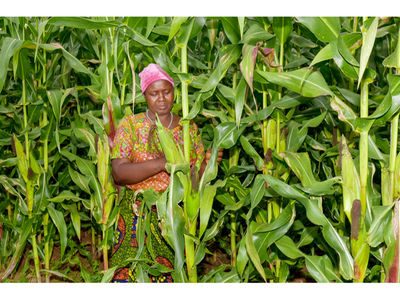
Tanzania has surged to become Africa’s second-largest maize producer, trailing only South Africa’s estimated 15 million tonnes. Government figures place our 2024-2025 output at 11.7 million tonnes, with an ambitious target of 15 million by next year. While independent reports vary, the consensus confirms a powerful upward trajectory.
So, what’s driving this growth? The government says it’s down to fertiliser subsidies rolled out in August 2022. That could be true — Tanzania applies a mere 15kg of fertiliser per acre, dwarfed by South Africa’s 50kg. Reaching our new benchmark of 24kg per acre promises even greater yields. Still, concrete evidence linking subsidies directly to increased harvests remains elusive. Correlation, after all, is not causation.
Yet this momentum matters profoundly. Agriculture isn’t just another sector here—it’s our economic backbone. Overtaking South Africa would carry deep symbolic weight, proving Tanzania can deliver transformational results in a strategic industry. Imagine applying this focus to sugar, sunflower, or wheat—crops that have drained $10 billion from our economy through imports in a single decade. Keeping that capital home would reshape our future.
Global realities, however, demand humility. The United States produces a staggering 378 million tonnes of maize annually—creating a whopping $87 billion in the process. While America dedicates a similar proportion of its land to corn as Tanzania, its yields are six times higher per hectare. We remain minnows in an ocean of giants.
What makes the difference isn’t just volume of maize — it’s what you use maize for. In the US, maize is a strategic resource. Nearly half of it is converted into ethanol to power vehicles. Another 40 percent feeds livestock, sustaining a multibillion-dollar meat and dairy industry. Only a tiny fraction — just about 1 percent — ends up as food on American dinner tables.
Tanzania flips this equation—90 percent of our maize is consumed as ugali, porridge, or makande— we love our stuff, but we have to appreciate the economic limitations. The problem is – Tanzanian maize doesn’t move industries. It doesn’t drive machines or multiply through animal value chains. We’re not just under-producing — we’re underutilising maize.
Just shifting 25 percent of maize to animal feed would create demand for 3 million extra tonnes. Converting 5 million tonnes into ethanol would give us 2 billion litres — saving $1 billion in fuel imports. That’s local demand. Tanzania doesn’t even need to export maize to justify increased production. The domestic market alone could absorb 10 million additional tonnes without strain.
Underproduction and underutilisation aside, we also haemorrhage value at every turn. We export unprocessed grain at $250–$320 per ton, only to reimport processed flour and paying a 140 percent premium for our own crop.
We burn maize stover amid livestock feed shortages, even as farmer-herder conflicts simmer. Meanwhile, our regional neighbours are struggling to meet basic food needs: DR Congo suffers a deficit of up to 2.5 million tonnes, Kenya 1.8 million tonnes, Malawi 0.8 million tonnes, and Zambia 0.6 million tonnes. Egypt once sought 10 million tonnes for oil processing—we couldn’t supply. We are surrounded by hungry markets, and yet we export less than a million tonnes of maize.
Our yield crisis is the root cause. At 1.9 tonnes per hectare, we scrape just 12 million tonnes from 10 million acres. The US would extract 45 million tonnes from that same land. America hasn’t expanded maize acreage in a century—yet it multiplied yields eightfold through innovation. Tanzanians default to clearing more land because it’s all we know.
But we could fix this. With irrigation and proper input management, Tanzania could hit 6 tonnes per hectare. Add triple-cropping, and we’re talking game-changing productivity. The land is not the limit — our methods are.
As we produce more maize, we need to be aware of the risk: maize prices fluctuate. When markets swing, farmers bleed. The US shields its growers with subsidies. We complain about those subsidies, but the truth is: their government protects its own. We need to come up with practical solutions for our environment: forward contracts to lock in prices, diversified export channels, and real-time market intelligence. This isn’t ideology—it’s economic triage.
The maize economy is bigger than farming. Plant residues could feed livestock – burning it while we fight over pasture is insane. Processing could capture that 140 percent markup domestically. Ethanol production would slash fuel imports. Smarter farming—drip irrigation, resilient seeds, soil science—would increase yields, not acreage.
So why stop at 15 million? The global maize market exceeds $200 billion. Tanzania barely touches it. But we’re moving. We’ve shown it’s possible to grow fast. We know exactly where we lose money. We hold the solutions.
Why, then, chain ourselves to 15 million tonnes? Let’s demand more than 30 million by 2030. We have land. The markets are ravenous. And if we can stay serious — really serious — we could finally turn maize into a national engine.
Charles Makakala is a Technology and Management Consultant based in Dar es Salaam.Read More



